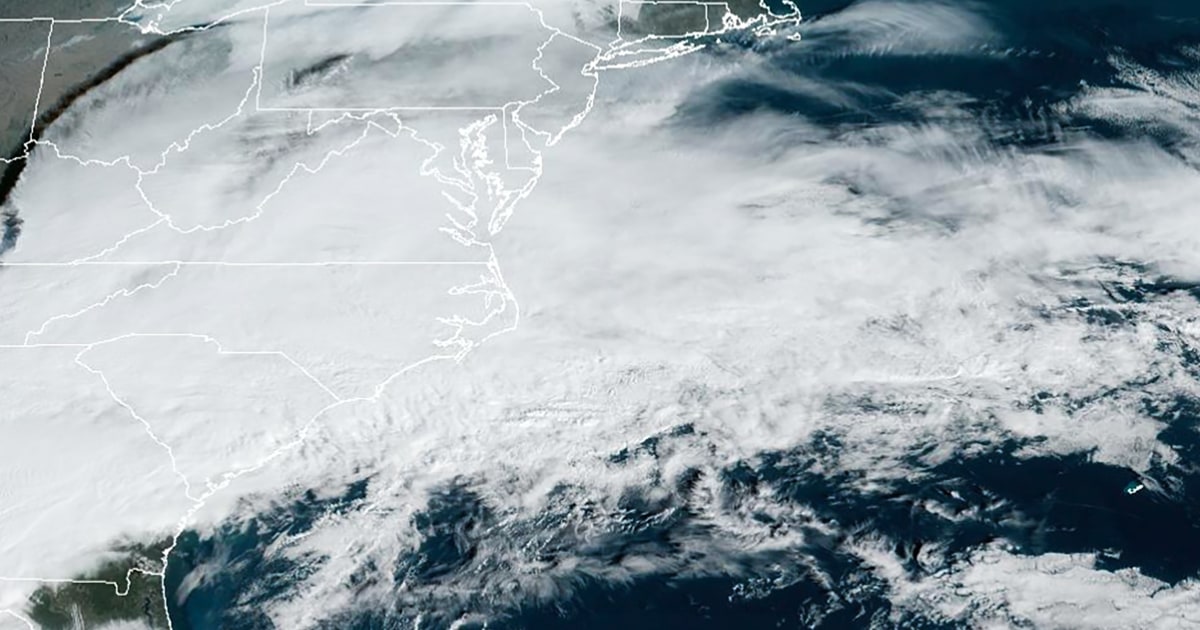
As millions watched the big game over the weekend, forecasters were watching a trend in forecast models that pointed to an increased chance of a powerful winter storm for the Northeast, including snow-starved New York City.
A colder, more southerly shift in the storm’s track has increased the likelihood of plowable snow from Philadelphia to Providence, forecasters said. In the models, the southerly slide painted a narrow axis of denser snow approaching the I-95 corridor.
Of greater concern, the heaviest snowfall was forecast for Tuesday morning. The potential for 2 inches of snow per hour could cause major travel delays on the road and at major airports from Philadelphia to Newark and New York to Boston, along with major travel times.
As of Monday morning, 49 million people were under winter warnings that extended from parts of the central Plains and Midwest to the Northeast and New England.
Snow is expected in eastern Oklahoma, southern Missouri, Arkansas, western Tennessee and southern Kentucky on Monday. At the same time, in the evening, cold rain will cross the Mid-Atlantic and move towards the Northeast.
Rain will change to snow Monday night into Tuesday morning across the Northeast, including along the I-95 corridor from Philadelphia to Hartford, Connecticut.
A transition from rain to snow is expected shortly before sunrise on Tuesday, with 1 to 2 inches of snow falling during the morning commute along the I-95 corridor from Philadelphia to Hartford and Providence, Rhode Island.
Heavier snow with potential rates of 2 to 3 inches per hour will be possible across eastern Pennsylvania, northern New Jersey, the Hudson Valley and through northern Connecticut and Rhode Island.
Due to the strong dynamics associated with this system, some thunderstorms are likely at sunrise, coinciding with the highest snowfall areas. New York City is in a potential thunderstorm zone.
Gusts of 25 to 35 mph will cause reduced visibility and further travel delays. Coastal flooding will also be a problem with this storm from Delaware to the southern New England coast.
This will be a fast moving storm so all the snow will be on the Atlantic coast by 5pm tomorrow.
3 to 6 inches of snow will be possible across much of the Northeast and New England. A band of 6 to 12 inches of snow is likely in a narrow band from northern New Jersey to eastern Massachusetts. Forecasters emphasized that although it is difficult to predict exactly where the heaviest snow band will form, the falling snow is likely to be very heavy and wet in nature. Heavy snow can make power outages more likely and can be dangerous for shoveling.
City time and expected snow totals
Rain in Philadelphia is expected to begin after 8:00 PM on Monday, then around 7:00 AM on Tuesday. Snow totals could be in the 1-2 inch range by the time the snow is expected to end around lunchtime.
Rain in New York will begin a little later than Philadelphia, around 11 PM Monday night, and snow will begin around 7 AM Tuesday. 5 to 8 inches could cover Central Park when the snow ends in the afternoon. New York City is in the zone of greatest uncertainty depending on where the band of heaviest snowfall is established, so the range of snow chances may adjust as the forecast comes into better focus on Monday.
If New York City gets 6 inches or more from this storm, it will be the city’s biggest snowstorm in 2 years since January 2022.
New York City Mayor Eric Adams announced on Monday morning that public schools will switch to remote learning on Tuesday.
Boston will be the last of the major cities along the I-95 corridor to see precipitation. Tuesday will start as a mix of rain and snow around 4am, then snow by 11am. 8 to 12 inches of snow will fall by dinner time Tuesday.
If the colder and snowier southerly trend continues, snowfall scenarios could be upgraded throughout Monday to reflect a change in storm track and intensity.
While all eyes will be on the north side of the storm system, the south side of the storm will also bring a nasty combination of severe thunderstorms and flooding rains to the Southeast on Monday.
As of Monday morning, severe thunderstorms were intensifying across parts of the South and Gulf Coast states, with a Tornado Watch in effect until 10 a.m. for parts of Louisiana, Mississippi, Alabama and the Florida Panhandle.
Through Monday, 7 million people are at risk of severe thunderstorms with hail, strong winds and isolated tornadoes.
Along with severe storms, flooding will also be a concern. About 17 million people in the southeast are under flood warnings.
